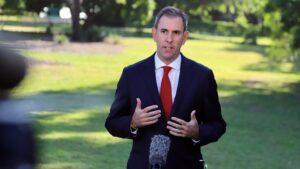4 key challenges will define 2024, with room for some optimism: AMP
Investors may be leaving 2023 behind feeling like they’ve dodged a bullet, with mounting challenges doing less market damage than many had feared. But many of these issues are not going away in the new year, according to AMP – although there’s still cause for optimism.
In a pair of recent notes on lessons from 2023 and the outlook for 2024, Shane Oliver and Diana Mousina – the financial services giant’s chief economist and deputy chief economist, respectively – described a pivotal moment for markets amid what appear to be seismic economic shifts.
And while 2024 is likely to see positive returns thanks to falling interest rates, the risk of a recession remains elevated, as the themes that have held dominance recently appear likely to continue, while new risks, particularly geopolitical ones, may join the fray.
“There were lots of bumps along the way – notably in the seasonally weak August-to-October period on the back of the sticky inflation/higher-for-longer-rates scare,” Oliver said in summarising the past year’s performance. “But for diversified investors, 2023 turned out okay, with okay growth and falling inflation.”
He noted that stronger-than-expected growth has staved off, so far, what many had seen as an inevitable recession, while the inflation narrative shifted turn toward disinflation over the course of the year as price increases moderated. The interest in artificial intelligence, which helped reverse the 2022 slump seen in key tech markets like the US, was also a major driving theme.
And while geopolitical threats were again front and centre in 2023, with conflicts in Israel/Palestine and elsewhere joining the Russia/Ukraine war as huge drivers of uncertainty in markets, Oliver said they have not proved to be as disruptive as initially feared.
What to watch for in 2024
Despite the conditions of the past year turning out more positive for markets than many had feared, investors are still facing a long list of worries in 2024, Oliver said. Many are continuations of themes from 2023, such as inflation remaining too high in most major countries, leaving a potential hawkish turn from central banks still on the table.
Recession risks also remain high, and the fact that higher interest rates still have not fully worked their way though the system makes this particularly pertinent in Australia. And that raises a high risk of a sharp pullback in sharemarkets, he said.
“It’s hard to see the biggest rate-hiking cycle since the 1980s not having a major impact, and the risks are already evident in tighter US lending standards, falling lending in Europe and stalling consumer spending in Australia,” he said. “And, unlike a year ago, many are no longer worried about a recession, which is negative from a contrarian perspective.”
According to Mousina, this monetary tightening cycle has taken longer than usual to play out, and cycles in general are particularly elongated in Australia.
“One of the main reasons for this is that we have had a record number of households fixing their mortgage rates in recent years at ultra-low interest rates, and a large chunk of households are still rolling off these fixed rates, providing a cushion to rising interest rates.”
Not all negative
But investors shouldn’t despair, according to Oliver, who points to three reasons to be optimistic about markets and the economy in 2024. First is the downward trend of inflation, which reflects easing supply chain pressures, cooling demand and loosening labour markets.
The expectation that central banks will start cutting rates in the first half of the year is also cause for optimism, he said. Finally, he noted that while there is still a high recession risk that, unlike in early 2023, is no longer being priced into markets, any recession that does occur should be mild.
All of this “should make for okay returns in 2024”, Oliver said. He expects the Reserve Bank of Australia to lower the cash rate to 3.5 per cent, from 4.35 per cent today, and thinks the ASX 200 will reach 7,500, while balanced super funds will return around 5.4 per cent.
As for property, Oliver sees residential prices falling as the impact of higher rates continues flowing through following price increases in 2023.
“However, with growth still slowing, shares historically tending to fall during the initial phase of rate cuts, a very high risk of recession and investors and sharemarket valuations no longer positioned for recession, it’s likely to be a rougher and more constrained ride than in 2023.”









